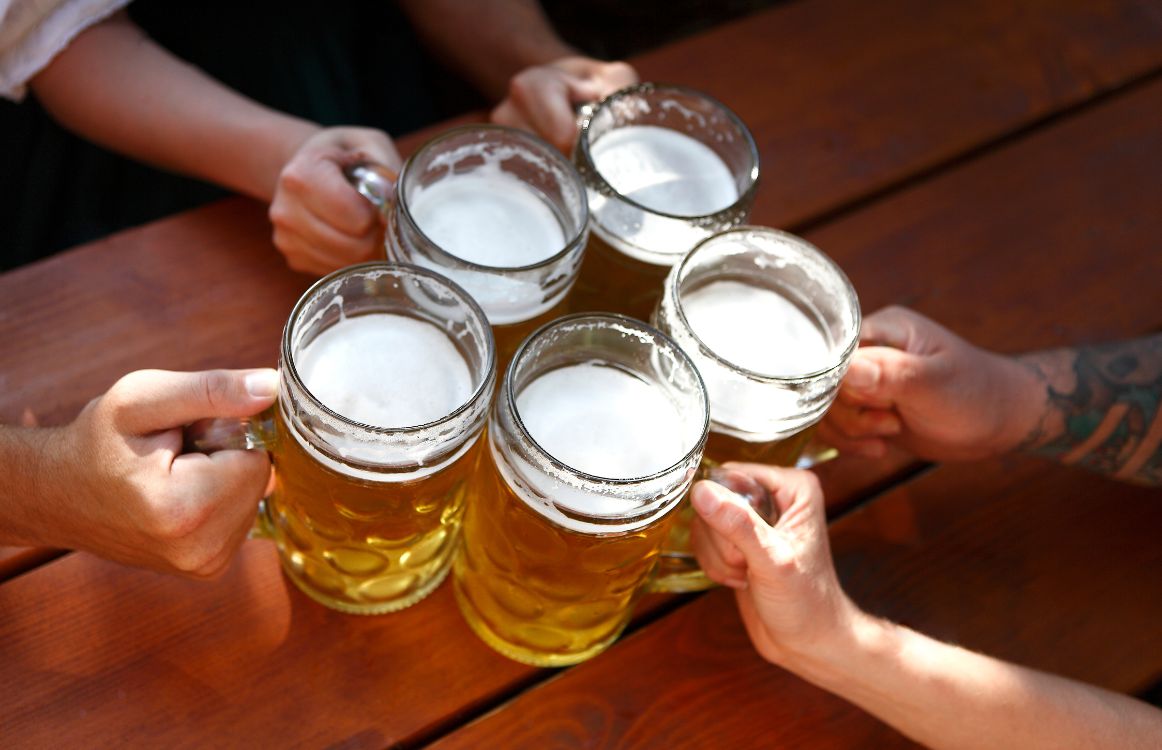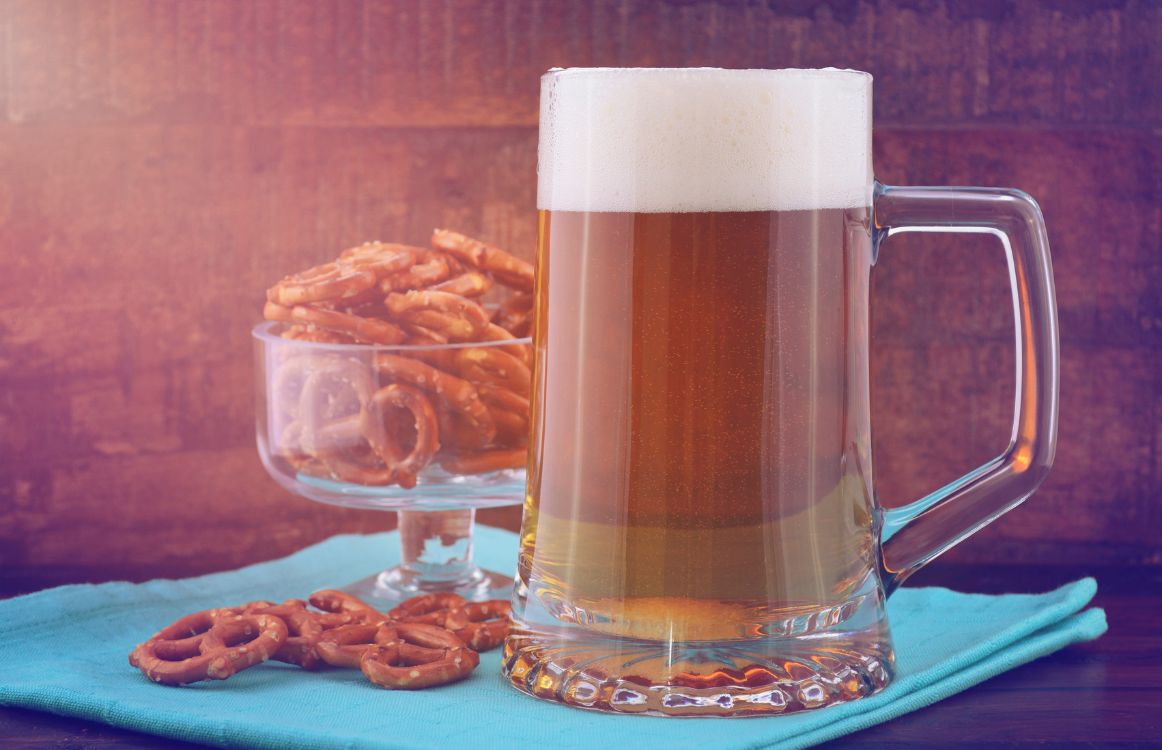What is a festbier?
If you’re just hearing about this delicious brew, you’re probably eager to know, “what is a festbier?” Well wonder no longer.
This German-style beer rooted in the tradition of low fermentation is rising in popularity for good reason, and we’re here to tell you all about it.

What Is a Festbier?
Festbier is a blanket term we use for any beer drunk during Oktoberfest, the three week period that marks the start of fall in the northern hemisphere, celebrated in Munich, Bavaria, in Germany.
It can range from a dark, amber malt beer with a sweet, doughy taste to a light, blonde lager that is more floral and herbal.
Festbiers all have a few things in common, however, which is that they are all fermented at the cooler temperatures of lagers, rather than ales, they are all low in hoppy characteristics, making them low in bitterness, and they will all be a smooth, clean, light beer that can be drunk throughout the day and over the course of the festival without fear of intense inebriation.
After all, festbier literally translates to festival beer.
History of Festbier
The first festbier was born during the first Oktoberfest, in October of 1810, which celebrated the marriage of Crown Prince Ludwig to Princess Therese of Saxony-Hildburghausen. It originally had nothing to do with the autumn season at all.
It was simply an enormous party that included Bavarian citizens and an abundance of food and drink.
The next year, however, the city decided to throw the festival again, and then again, and it has now been more than two hundred years, with the party having extended to three weeks rather than just several days, and the party is still raging on every fall in Munich.
Back to that first beer.
Well, the popular beer in the early 1800s was a dark, bold beer heavy in chocolate and smoky flavors. Thus, this dark, rich, heavy beer was the festbier at the time.
A few decades later, in 1841, amber lager hit the scene at Oktoberfest, losing the dark, chocolate notes but maintaining its lager status.
Because the beer at the time was brewed during March and indeed brewing was forbidden to extend into the warmer months out of fear of spoilage, festbier was also known as märzen beer. Essentially, the beer served at Oktoberfest had been brewed in March and stored until the festival.
Märzen beer was the standard beer for the festival for about 100 years until just a few decades ago, when festbier began to actually take on the expectations of a festival, that you can drink it all day and for several days without getting falling down drunk.
Since that time, in the 1970s, festbier has been lighter in texture and mouthfeel, closer to a session beer.
Thus, festbier today is a light blonde German lager that is low in hops, higher in sweetness, and has malted, doughy notes that can be drunk and enjoyed over several days of the festival.
Difference between Festbier and Märzen
So, you ask, then what is the difference between a marzen and a festbier?
Well, everything and nothing, really, all depending on the time we’re talking about.
Märzen beer originally was simply any beer made in Germany under those laws in the 1800s that beer could only be brewed in the spring, during cooler months.
Because beer brewed during the hot months of summer could breed bad bacteria and spoilage, people could get sick, and so the German monarchy forbade this practice.
Instead, brewers could brew beer during the cooler months and then lager it, storing it in cooler basements, or even caves like the Bavarian monks did, during the summer.
The beer has been, traditionally, rich in malt with some hoppy bitterness, and toasted bread flavors and aromas.
Marzen beer quickly became known as Oktoberfest beer and held that title for more than 100 years, but the two are not necessarily the same, especially since Bavarian brewers have changed the nature of festbier in recent decades.
In the end, you might have a märzen beer that is also a festbier, but the two are not inextricably linked.
Difference between Festbier and Oktoberfest beer

Here, we find the differences lie in geography more than time period.
The actual celebration of Oktoberfest in Munich will have festbiers, and all of the beer served will likely be Oktoberfest beer, but they all will also likely be the modern day festbiers, lighter, blonde German lagers that do not feel heavy and can be drunk over the course of several days.
The average festbier today is quite pale.
In contrast, the average Oktoberfest beer brewed in the US is much darker, heavier, and more red or amber in color.
Oktoberfest beers in the US are filling, which makes it challenging to drink several over the course of a few days, much less in a single sitting, a challenge made even more difficult when paired with heavy German food.
It seems that most Oktoberfest beers brewed in the US are harkening back to the original days of Oktoberfest, when the dark, smoky, heavy malt beers were brewed, and who can blame them?
Those ambers are delicious, and they are also most often lagers, interestingly enough. While we usually differentiate between amber and lager, with Oktoberfest beer, we can have both – amber in color thanks to a high heat malt, and lager in fermentation and aging.
The end result is nothing short of amazing.
Again, you can have Oktoberfest beer that is a festbier, or a festbier served at Oktoberfest, but the two can also be distinct.
Festbiers to Try
To get an idea of the range of festbiers that are in circulation this fall, it is worth trying some of the best on the market.
- Weihenstephaner Festbier, from Freising, Germany
- Commerzienrat Riegele Privat, from Augsbur, Germany
- Hofbrau Oktoberfestbier, from Munich, Germany
- Oktoberfest Bier, from Munich, Germany
- Oktoberfest, from Chico, California, USA
- Festbier, from Inglewood, California, USA
Cheers!
Are you still pitching fresh yeast every time? By reusing your yeast, you can save up to hundreds of thousands of dollars per year on just yeast alone!
Join the hundreds of brewers from all around the world using the Smartest Automated Yeast Cell Counter! Request a Free Demo Account today and experience firsthand how Oculyze can take your brewery to the next level!
Sources:
- https://www.saveur-biere.com/en/magazine/beer-styles/3/what-is-a-festbier/oktoberfestbier-style-beer/40
- https://beerandbrewing.com/oktoberfestbier-brewing-the-worlds-most-famous-party-lager/
Stay on top on important fermentation insights – subscribe to our monthly newsletter and receive a hand-picked selection of our most relevant articles straight to your inbox.
Never miss a beat and get real time updates with a new article each workday by subscribing our social media channels.
Instagram | Facebook | Twitter | YouTube


